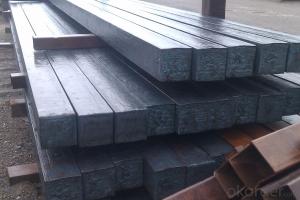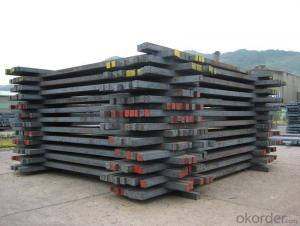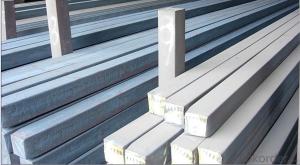Q235/3SP 100MM Blast Furnace Hot Rolled Steel Billet
- Loading Port:
- Tianjin
- Payment Terms:
- TT OR LC
- Min Order Qty:
- 2000 m.t.
- Supply Capability:
- 30000 m.t./month
OKorder Service Pledge
OKorder Financial Service
You Might Also Like
Description of Q235/3SP 100MM Blast Furnace Hot Rolled Steel Billet
Our hot dip galvanised steels consist of a steel substrate with a metallic zinc coating applied by means of a continuous hot dip galvanising process. Metallic zinc coatings are available in steel grades ranging from steel for bending and deep drawing applications, to structural steels and high yield strength steels.
A glossy surface finish obtained under specific skin-pass conditions (either non-skin-passed or skin- passed with smooth cylinders to obtain low roughness) can be provided if required at time of enquiry.
Advantage of Q235/3SP 100MM Blast Furnace Hot Rolled Steel Billet
Uncoated CR steel sheet With the features of in line with the international highest standards in demension and shape, excellent surface finish and properties, the products are mainly used in home appliance and automobile industries.
Galvanized steel sheet(include HDG and EG)
With the features of good corrosion resistance, the products are mainly used in automobile, home appliance, electronics, building and machinery manufacture industries, etc.
Precoated steel sheet With the features of enviromental protection and good processablility, long lasting surface durability, rich in colors, the products are maily used in building, home appliance and furniture industries, etc.
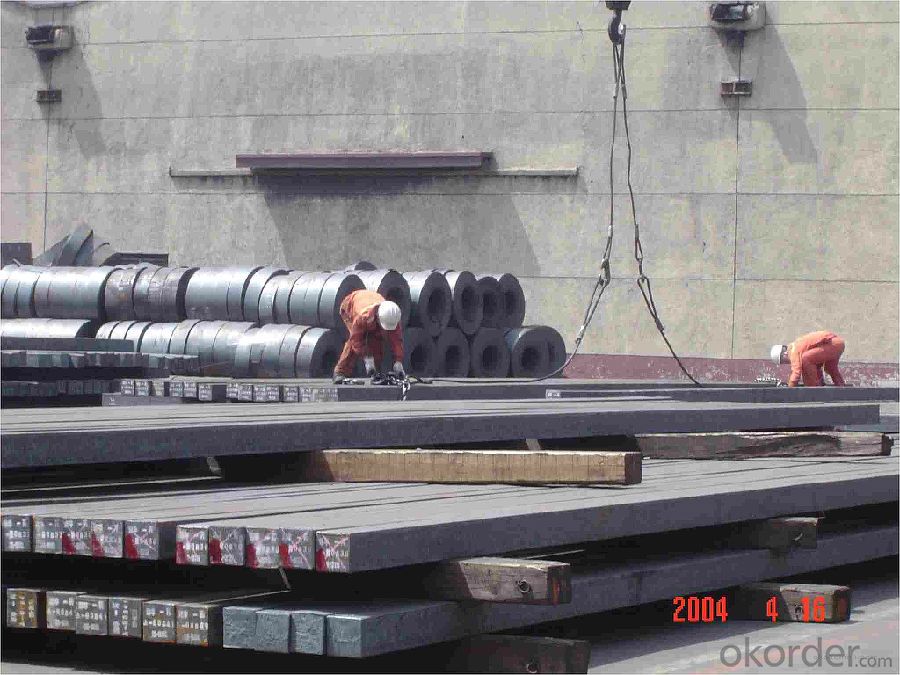
Applications of Q235/3SP 100MM Blast Furnace Hot Rolled Steel Billet
Our hot dip galvanised steels can be used in a very wide range of applications for industrial markets, both indoors and outdoors. Some of the most common applications are:
Building: wide sections for roofing and cladding, doors, door frames, metallic ceilings, partitions, structural members etc
Domestic appliances: all appliances for this sector (both white and brown goods) are manufactured with hot dip galvanised steels
Miscellaneous: electrical cabinets, aeraulic components, air conditioners, road signs etc
Zinc hot dip galvanised steel is suitable for contact with foodstuffs under certain conditions, as specified in European directive 89/109/EEC and French standard NF A 36-712-1. Please contact us for further information on this subject.
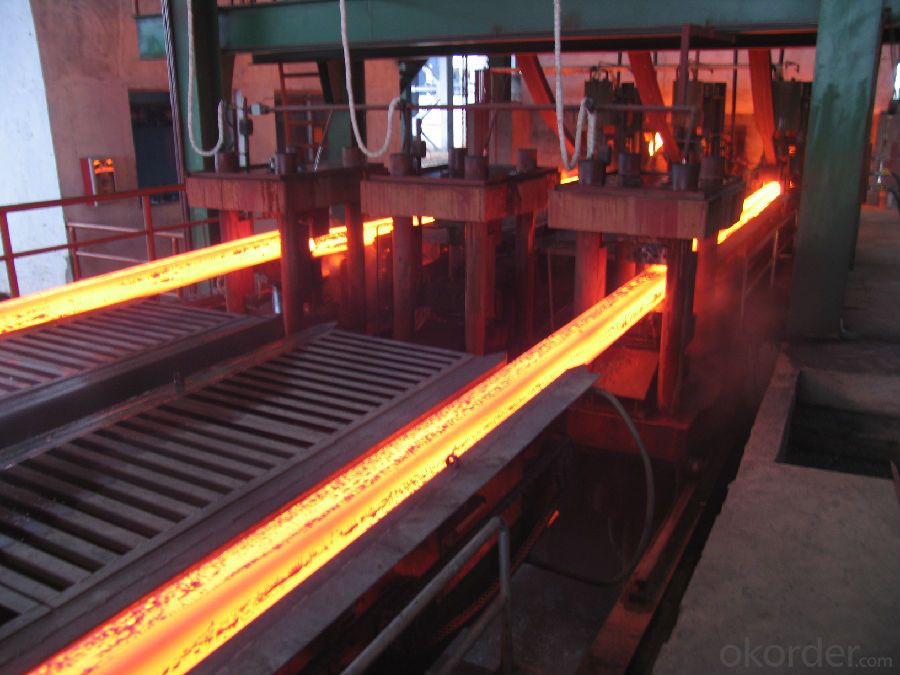
Specifications of Q235/3SP 100MM Blast Furnace Hot Rolled Steel Billet
Quality | Q/BQB 440-2003 | JIS G3312-1994 JIS G3321 | EN 10326-2004 | ASTM A653-02a |
EN 10327-2004 | (BASE PLATE) | |||
(BASE PLATE) | ||||
Commercial Steel | DC51D | SGCC SGLCC | DX51D+Z DX51D+AZ | CS Type A/B/C |
Forming Steel | St01,St02,St03 | SGCD1 SGLCD1 | FS Type A, Type B | |
Drawing | DC52D /DC53D | - | DX52D+Z DX52D+AZ | DDS TYPE A/C |
Steel | DX53D+Z DX53D+AZ | |||
Structural | S280GD (StE28) | SGC400 SGLC400 | S280D+Z DX54D+AZ | SS275 |
Steel | S350GD (StE34) | SGC440 SGLC440 | S350D+Z S350D+AZ | SS340 Class1 |
FAQ of Q235/3SP 100MM Blast Furnace Hot Rolled Steel Billet
We have organized several common questions for our clients,may help you sincerely:
1. How Can I Visit There?
Our company is located in Tianjin City, China, near Beijing. You can fly to Tianjin Airport Directly. All our clients, from home or aboard, are warmly welcome to visit us!
2. How Can I Get Some Sample?
We are honored to offer you sample.
3. Why choose CNBM?
Our delivery time about 15-20days for standard sizes, if you have other requirements like hardness, quanity and width ,it is about 20-40days. But don't worry we also try our best for the delivery time ,because time longer and our cost is higher.
- Q:How do steel billets differ from steel bars?
- Steel billets and steel bars are both forms of semi-finished steel products, but they differ in terms of their size, shape, and production process. Steel billets are typically square or rectangular in shape and have a larger cross-sectional area compared to steel bars. They are produced through a casting process, where liquid steel is poured into molds and then allowed to solidify. On the other hand, steel bars are long, cylindrical shapes that are formed by rolling billets through a series of rolling mills. The rolling process increases the length and reduces the cross-sectional area of the steel, resulting in a more uniform shape and size.
- Q:What is the role of steel billets in the production of automotive components?
- The role of steel billets in the production of automotive components is to serve as the raw material for forging or casting processes. These billets are heated and shaped into various automotive parts, such as engine components, chassis parts, and suspension systems. Steel billets provide the necessary strength and durability required for these components to withstand the demanding conditions and stresses encountered in automotive applications.
- Q:How are steel billets used in the manufacturing of mining equipment?
- Steel billets are an essential component in the manufacturing of mining equipment. These billets are essentially semi-finished steel products that are formed into a specific shape and size that is required for the equipment being produced. In the case of mining equipment, steel billets are used as the raw material for various parts such as gears, shafts, and structural components. The billets are heated and then subjected to a process called forging, where they are shaped and molded into the desired form using heavy machinery and high pressure. The strength and durability of steel make it an ideal material for mining equipment due to the harsh and demanding conditions that these machines operate in. Steel billets offer excellent mechanical properties, such as high tensile strength and resistance to wear and corrosion, which are crucial for the equipment to withstand the heavy loads and abrasive environments encountered in mining operations. Once the steel billets are forged into the required shape, they undergo further processes such as machining, heat treatment, and surface finishing to achieve the final specifications and desired quality standards. These processes ensure that the mining equipment meets the necessary performance criteria and can withstand the rigorous demands of mining operations. Overall, steel billets play a crucial role in the manufacturing of mining equipment by providing a strong and reliable foundation for the various components. Their use ensures that the equipment can withstand the extreme conditions of mining operations, ultimately contributing to the efficiency, safety, and productivity of these vital industries.
- Q:What are the different types of mechanical property testing methods for steel billets?
- There are several different types of mechanical property testing methods used to evaluate the quality and strength of steel billets. These methods include: 1. Tensile Testing: Tensile testing is one of the most commonly used methods to determine the mechanical properties of steel billets. It involves applying a tensile force to a small sample of the billet until it fractures. This test measures the strength, yield strength, elongation, and reduction in area of the material. 2. Impact Testing: Impact testing is used to assess the toughness and resistance to fracture of steel billets. It involves striking a notched specimen with a pendulum or hammer and measuring the energy absorbed during fracture. The results provide information about the material's ability to withstand sudden shocks or dynamic loads. 3. Hardness Testing: Hardness testing determines the resistance of the steel billet to indentation or scratching. Various methods can be employed, such as Rockwell, Brinell, or Vickers hardness testing. The results are often correlated with other mechanical properties, such as strength and ductility. 4. Charpy Testing: Charpy testing is a type of impact test specifically designed to evaluate the notch toughness of steel billets. It involves striking a notched specimen with a pendulum, and the energy absorbed during fracture is measured. This test is particularly useful in assessing the material's behavior under low-temperature conditions. 5. Bend Testing: Bend testing is performed to assess the ductility and flexibility of steel billets. It involves bending a sample around a specified radius until it fractures or shows signs of cracking. This test provides information about the material's ability to withstand deformation without breaking. 6. Fatigue Testing: Fatigue testing is used to evaluate the steel billet's resistance to cyclic loading or repeated stress. It involves subjecting a sample to a varying load, and the number of cycles required for failure is recorded. This test helps determine the material's durability and its ability to withstand long-term stress. These mechanical property testing methods play a crucial role in ensuring the quality and reliability of steel billets for various applications. By evaluating the strength, toughness, hardness, and other mechanical properties, manufacturers and engineers can make informed decisions about the suitability of the material for specific uses.
- Q:What are the different surface finishing techniques used for steel billets?
- Steel billets commonly undergo various surface finishing techniques to enhance appearance, improve corrosion resistance, and provide a protective coating. The following are some of the techniques employed: 1. Hot Rolling: Steel billets are passed through a series of hot rollers to shape them and create a smooth surface finish. This method is commonly used for producing steel plates, sheets, or structural shapes. 2. Cold Rolling: Similar to hot rolling, this technique is performed at room temperature. It results in a smoother surface finish, increased dimensional accuracy, and improved mechanical properties of the steel billets. 3. Shot Blasting: Steel billets are bombarded with high-velocity metallic or non-metallic particles to remove scale, rust, and other contaminants from the surface. This process ensures a clean and uniform appearance. 4. Pickling: Steel billets are immersed in an acid solution to eliminate oxides, scale, and rust from the surface. This method achieves a clean and smooth surface finish, ready for further processing or coating. 5. Galvanizing: The steel billets are coated with a layer of zinc using hot-dip galvanizing, electro-galvanizing, or mechanical galvanizing methods. This coating provides excellent corrosion resistance and protects against environmental factors. 6. Painting: A layer of paint or protective coating is applied to the surface of the steel billets. This technique enhances appearance and provides protection against corrosion and weathering. 7. Passivation: A chemical process is utilized to remove free iron or iron oxides from the surface of steel billets. This improves corrosion resistance, leaving a clean and passive surface. 8. Polishing: Abrasive materials or compounds are used to smoothen the surface of steel billets. This technique achieves a high gloss or mirror-like finish, enhancing the aesthetic appeal of the steel. Each of these surface finishing techniques offers unique advantages and is selected based on the specific requirements of the steel billets, including appearance, corrosion resistance, and functionality.
- Q:What are the main differences between carbon steel and alloy steel billets?
- Both carbon steel and alloy steel billets are utilized in various industries, but they differ in several key aspects. The primary discrepancy between carbon steel and alloy steel billets lies in their composition. Carbon steel billets consist primarily of iron and carbon, with carbon content typically ranging from 0.05% to 2.1%. This renders carbon steel comparatively more cost-effective and easier to manufacture than alloy steel. Conversely, alloy steel billets incorporate additional elements like manganese, nickel, chromium, and molybdenum, which are added to enhance specific steel properties. These alloying elements confer upon alloy steel superior strength, hardness, and resistance to corrosion compared to carbon steel. Another significant distinction between carbon steel and alloy steel billets pertains to their mechanical properties. Carbon steel billets are widely recognized for their high ductility and ease of shaping or forming, making them suitable for applications requiring flexibility and effortless machinability. Conversely, alloy steel billets possess higher tensile strength, toughness, and wear resistance due to the presence of alloying elements. This renders alloy steel billets ideal for applications necessitating high strength and wear resistance, such as in the construction, automotive, and aerospace industries. Moreover, the heat treatment processes for carbon steel and alloy steel billets also vary. Carbon steel billets are frequently subjected to heat treatment to enhance their hardness and strength, with common treatments encompassing quenching and tempering. Conversely, alloy steel billets can undergo a broader range of heat treatment processes, including annealing, normalizing, and precipitation hardening. These heat treatments serve to optimize the properties of alloy steel billets for specific applications, such as increasing strength or improving machinability. In conclusion, the primary disparities between carbon steel and alloy steel billets lie in their composition, mechanical properties, and heat treatment processes. Carbon steel predominantly comprises iron and carbon, while alloy steel incorporates additional alloying elements. Carbon steel possesses high ductility and is easily shaped, whereas alloy steel boasts superior strength, hardness, and resistance to corrosion. The heat treatment processes for these two steel types also differ, with alloy steel affording a wider array of treatment options.
- Q:What is the difference between carbon three plants and carbon four plants?
- Also known as C4 plants. Such as corn, sugar cane, sorghum, amaranth and so on.CO2 is the first product of the assimilation of photosynthetic carbon cycle in three carbon compounds 3- phosphoglycerate plants, known as carbon three plants (C3 plants), such as wheat, soybeans, cotton, tobacco, etc.. C3 plants have higher CO2 compensation points than C4 plants, so the survival rate of C3 plants is lower than that of C4 plants when the CO2 content is low.By contrast, the division of C3 plant cells is less definite than that of C4 plants, and CO2 uses less efficiently. To some extent, C3 plants may be considered as prokaryotes in plants, whereas C4 plants are more like eukaryotes".
- Q:How are steel billets used in the manufacturing of industrial compressors?
- Industrial compressors require steel billets as a crucial part of their manufacturing process. These billets, essentially semi-finished steel products in the shape of a rectangular solid, are the starting material for making different compressor components. To begin with, steel billets are heated to high temperatures and then passed through rolling mills to shape them into specific forms like bars, rods, or sheets. These processed steel billets are then used to fabricate important compressor components such as the crankshaft, connecting rods, cylinder blocks, and piston rings. The crankshaft, which converts the piston's reciprocating motion into rotational motion, is typically forged from a steel billet. The billet undergoes controlled heating, shaping, and machining processes to achieve the desired shape and strength necessary to withstand the high pressures and forces within the compressor. Likewise, connecting rods, responsible for connecting the piston to the crankshaft, are also made from steel billets. These billets are machined precisely and undergo various heat treatment processes to ensure optimal strength and durability. Cylinder blocks, the primary structural frame of the compressor, are often casted from steel billets. The billets are melted and poured into molds to achieve the desired shape. Once solidified, further machining is performed on the cylinder block to create the cylinder bores, mounting surfaces, and other necessary features. Moreover, steel billets are utilized for producing piston rings, which play a crucial role in maintaining proper compression and preventing leakage. The billets are machined and then subjected to heat treatment processes to enhance wear resistance and ensure a precise fit within the cylinder. In summary, steel billets are indispensable in the manufacturing of industrial compressors as they provide the raw material for creating vital components. The ability to shape and process steel billets enables the production of robust, durable, and high-performance compressors capable of meeting the demanding requirements of various industries.
- Q:What is the role of steel billets in the construction of airports and terminals?
- Steel billets are essential in the construction of airports and terminals due to their advantageous properties. Essentially, they are semi-finished metal products used as raw materials for manufacturing various steel products. When it comes to airports and terminals, steel billets are mainly used to produce structural steel components like beams, columns, and trusses. The strength and durability of steel billets make them preferred in the construction industry. Steel is well-known for its high tensile strength, enabling it to withstand heavy loads and structural stresses. This makes it ideal for building large and complex structures such as airports and terminals, where safety and reliability are paramount. Moreover, steel billets can be easily shaped and sized to construct different components needed in airports and terminals. These billets are often hot rolled or forged into the desired shapes, ensuring the resulting steel products have the necessary strength and structural integrity. Another advantage of using steel billets in airport and terminal construction is their resistance to adverse environmental conditions. Airports and terminals face harsh weather conditions, including extreme temperatures, moisture, and corrosion. Steel, especially when properly coated or treated, is highly resistant to these factors, ensuring the longevity and structural stability of the facilities. Furthermore, steel billets are relatively cost-effective compared to other construction materials, especially considering their durability and low maintenance requirements. The long lifespan of steel structures reduces the need for frequent repairs or replacements, resulting in cost savings over time. In conclusion, steel billets are crucial in constructing airports and terminals as they provide the required strength, durability, and versatility for large-scale structures. Their ability to withstand heavy loads, resistance to environmental factors, and cost-effectiveness make them an ideal choice for these high-demand facilities.
- Q:How are steel billets used in the manufacturing of fasteners and fittings?
- Steel billets are an essential raw material in the manufacturing of fasteners and fittings. Fasteners, such as bolts, screws, and nuts, are used to hold two or more components together securely. Fittings, on the other hand, are used to connect or join different parts of a structure or system. To manufacture fasteners and fittings, steel billets undergo several processes. Initially, the billets are heated to a high temperature to make them malleable. This heating process, known as hot rolling, allows the steel billets to be shaped into the desired form. The billets are then passed through a series of rollers, which gradually reduce their thickness and increase their length. This process transforms the billets into long, slender rods known as wire rods. The wire rods are subsequently cold drawn or cold rolled to further refine their shape and dimensions. This process improves the surface finish and increases the strength of the rods. The cold drawing or rolling process results in the formation of wires with precise diameters, which are then used to manufacture fasteners such as screws, bolts, and nuts. The wires are cut into specific lengths and threaded to create the necessary grooves and patterns required for fastening. The threads on the wires allow them to be easily screwed into or onto other components, providing a secure and reliable connection. The shape and size of the threads are crucial as they determine the compatibility of the fasteners with different applications. For fittings, the wire rods are subjected to additional processes such as machining, bending, or welding. Machining involves cutting the wire rods into specific shapes and sizes using various cutting tools. Bending allows the wire rods to be shaped into different angles or curves to fit the desired configuration of the fittings. Welding is employed to join multiple wire rods or other components together to create complex fittings. Once the fasteners and fittings are manufactured, they undergo quality control tests to ensure they meet the required standards for strength, durability, and dimensional accuracy. These tests include checking for proper threading, hardness, and resistance to corrosion. In summary, steel billets are extensively used in the manufacturing of fasteners and fittings. Through processes like hot rolling, cold drawing or rolling, threading, and various shaping techniques, steel billets are transformed into wires and then further processed to create a wide range of fasteners and fittings that are crucial for construction, machinery, automotive, and other industries.
1. Manufacturer Overview |
|
|---|---|
| Location | |
| Year Established | |
| Annual Output Value | |
| Main Markets | |
| Company Certifications | |
2. Manufacturer Certificates |
|
|---|---|
| a) Certification Name | |
| Range | |
| Reference | |
| Validity Period | |
3. Manufacturer Capability |
|
|---|---|
| a)Trade Capacity | |
| Nearest Port | |
| Export Percentage | |
| No.of Employees in Trade Department | |
| Language Spoken: | |
| b)Factory Information | |
| Factory Size: | |
| No. of Production Lines | |
| Contract Manufacturing | |
| Product Price Range | |
Send your message to us
Q235/3SP 100MM Blast Furnace Hot Rolled Steel Billet
- Loading Port:
- Tianjin
- Payment Terms:
- TT OR LC
- Min Order Qty:
- 2000 m.t.
- Supply Capability:
- 30000 m.t./month
OKorder Service Pledge
OKorder Financial Service
Similar products
New products
Hot products
Related keywords

